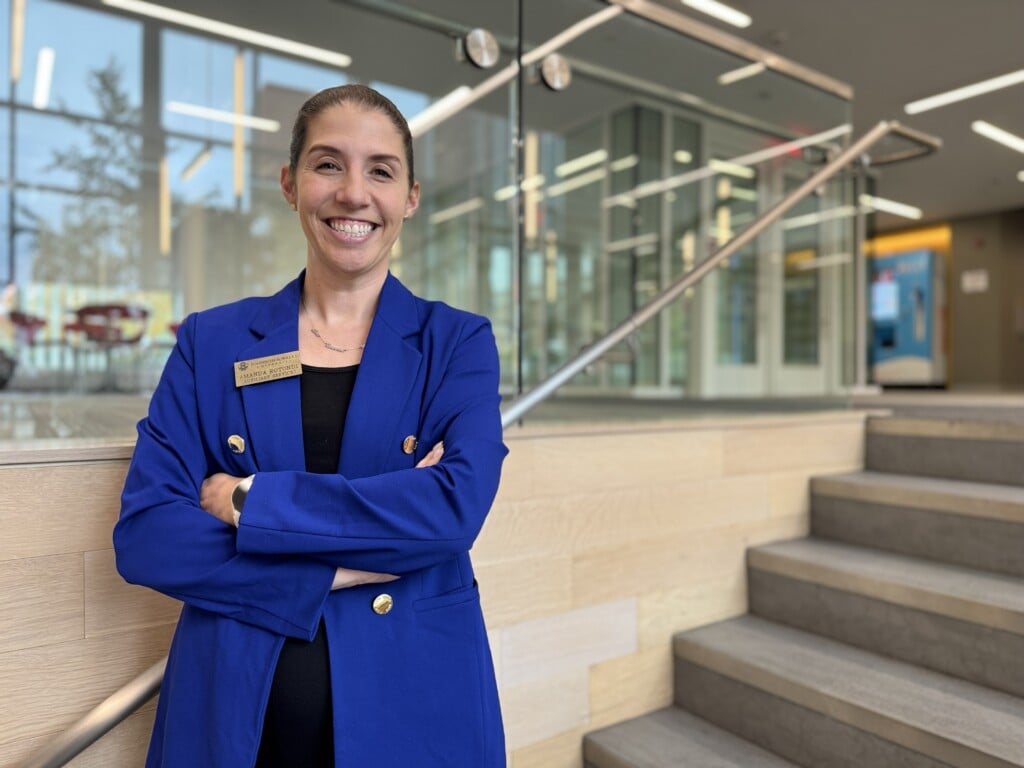Air Crafting with Pneuhaus
The local company celebrates a decade of prioritizing playful design with inflatable art.
Pneuhaus’ first order came in before the company was even founded.
Rhode Island School of Design officials needed decorations for commencement, and asked seniors Matthew Muller and Augie Lehrecke to create large inflatable sculptures.
So that’s how the friends spent Senior Week 2014 — hunched over swaths of fabric until late in the evenings, stitching together blue inflatable tubes in the school’s upholstery studio.
“That’s when we thought, ‘Oh, there might be a business here,’” Muller says.
Eleven years later, the former furniture design students — along with fellow co-founder Levi Bedall — are celebrating a decade of creating inflatable art, sculpture and commissioned works that meld light, sound and movement and defy any sort of categorization.
You may have seen some of their designs at PVDFest, like a giant compound camera made of 109 inflatable pinhole cameras, an immersible dome that projects the outside environment inward, giving viewers the impression they’re inside a fly’s eye. Or Pnit, a woven structure that pulsates and morphs into different hues, draped onto the enormous facade of a downtown Providence parking garage.
You’ll also find their work at art fairs, children’s museums and within well-known organizations like Spotify and NASA.
And it all started at RISD.
Muller and Lehrecke were roommates, both studying furniture design when they had the idea to start crafting inflatable sculptures.
“We thought, what if we take the craft-based practice that the department is teaching us, that is mostly applied to wood and metal, and apply that approach to inflatables?” Muller says.
It took a little convincing, but the pair was allowed to do a joint thesis — a first for the department, Muller thinks. They titled it “Pneuhaus” — pronounced “new-house” — and the name carried through graduation into the business that now occupies a 7,000-square-foot studio in the Phillipsdale Landing complex in Rumford.
Their work is a mix of custom commissions, public art and self-funded projects. The inflatables are made in-house, using techniques like sewing, hot air welding and radio frequency welding to splice everything together. Since so much of their work is located outdoors, they must use weather-resistant fabrics. (Muller usually has a few rotating fabric swatches in his backyard to test how they react to weather conditions.) A high wall of shelving holds most everything they’ve ever made, neatly tucked into bags and crates and containers.
“Friends of mine that do sculpture, it’s devastating, because after they make a big piece, they have to take it apart, whereas we can store them all,” Muller says, looking up at all of their past creations. “Not only that, we can ship them and rent them out. And we didn’t really realize how valuable that would be to having a sustainable practice.”
Fall is usually their busiest time, since that’s when most larger cities host arts and culture festivals similar to PVDFest. Recent commissions include a listening booth for Spotify, museum exhibit pieces, and a simulated Mars habitat for NASA to use in training astronauts.

Pnit, a woven inflatable, draped onto the side of a downtown Providence parking garage. Photography courtesy of Pneuhaus.
The habitat is an inflatable with the Martian landscape printed on it that goes over an area where astronauts will simulate exercising on Mars. It has a Truman-Show-esque horizon line printed
on it, Muller jokes, and had to meet exacting safety standards and be able to last throughout the three-year project.
All those projects can take a toll on the creative mind, so Pneuhaus devotes each Friday to play. And dogs — you’ll often find a designer’s pup or two roaming the cavernous space, checking out visitors with a friendly sniff and wag of the tail.
In a bid to be more environmentally friendly, Pneuhaus hopes to phase out its use of PVC, which are used in many airtight inflatables due to durability, and move toward more sustainable fabrics. The firm also wants to remain dedicated to its art and creative process, while maintaining a small, nimble, fun-loving crew.
“I think we all agree we don’t want to become like a massive company,” Muller says, “but remain something that sustains us and allows us to keep creating work that we’re proud of.” pneu.haus






























